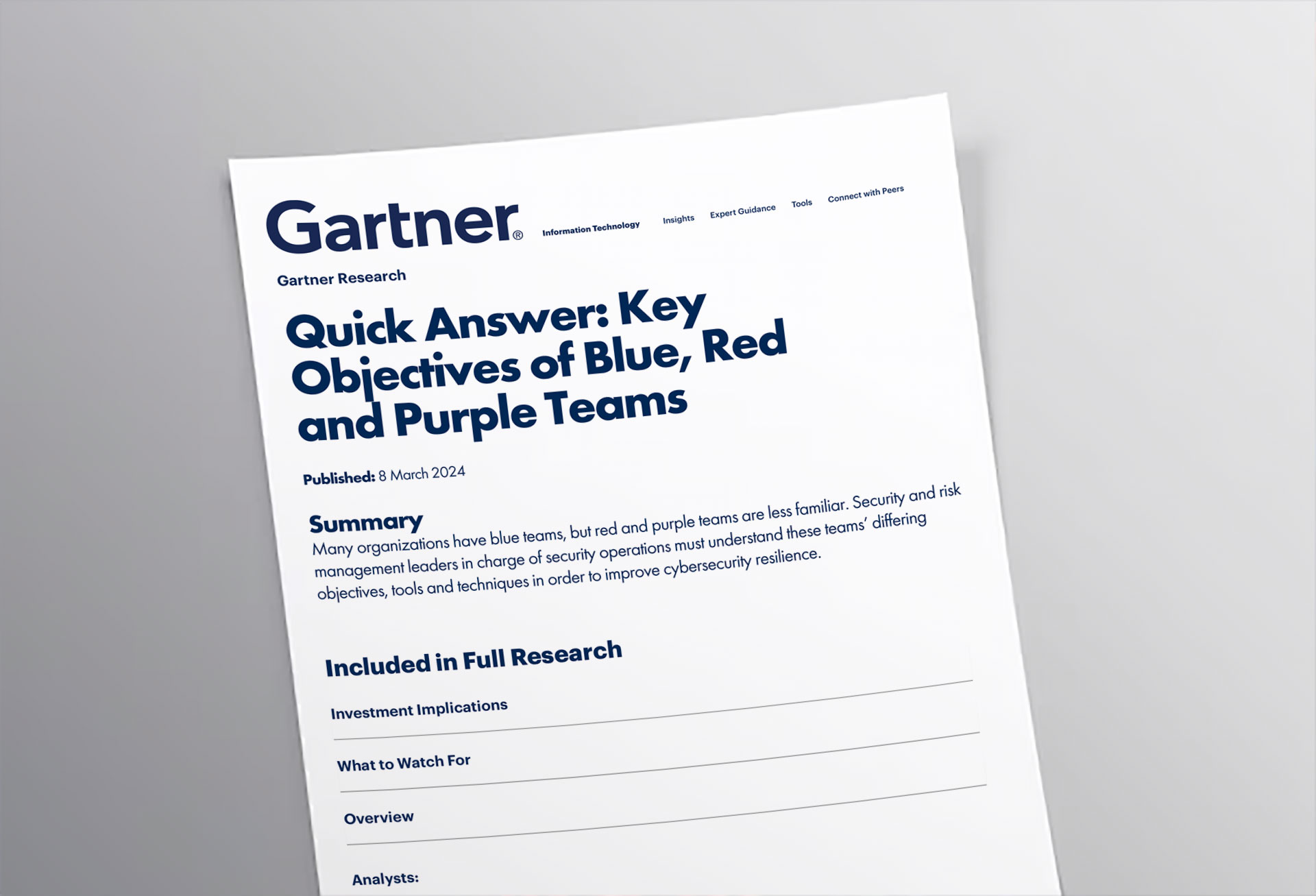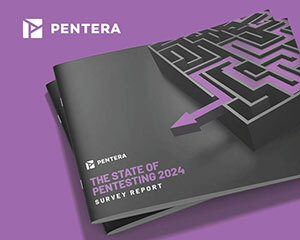In order to protect an organization’s critical assets from Internet access, IT teams often create isolated or ‘air-gapped’ networks. These networks are often considered inherently untouchable.
While air-gapped networks may not have direct access to the Internet, they still often require DNS services in order to resolve a company’s internal DNS records. This will prove to be a weak point as we show in this article.
Below are two common architectures of how DNS is connected to air-gapped networks:
In the second example, many organizations often make the mistake of thinking that by routing communication over an internal DNS server they are preventing a potential breach. However, they are still susceptible as the internal DNS server can still connect with a public DNS server.
This research explores how an attacker can communicate over DNS to access an ‘air-gapped’ network and what can be done to prevent it.
The DNS threat landscape
DNS attacks, in general, are more common than ever with 88% of organizations reporting some type of DNS attack in 2022 according to the latest IDC Global DNS Threat Report. More specifically, attackers often abuse DNS to establish command and control (C2) to gain unauthorized access to the network. One type of these attacks, DNS Tunneling, which is discussed in this paper, accounted for 28% of DNS attacks in 2022, an increase of just over 16% year over year.
There are many examples of how DNS has been abused as a C2 channel.
In this article, we’ll show an example of how an attacker could leverage DNS communication to an air-gapped network, but before we do that, let’s talk about what exactly is DNS.
DNS in a nutshell
DNS is a protocol used to get a record of a specific name. In this example, we’ll focus on TXT and NS DNS record types.
While there are many types of records, two are of particular interest:
- TXT – The text record of a provided name – this can be any text written by the DNS administrator.
- NS – The Name Server record of a provided name – this record basically returns the name servers that hold our provided name.
For example, we can see the AWS Name Servers hold the ‘pentera.io’ name.
It’s also important to remember that while DNS protocol can run on TCP, it is mostly based on UDP. Each protocol has a different use, but UDP does not have a built-in error-detecting mechanism, which will play a role later in this article.
How it works: Send/receive info over DNS
Sending information over DNS can be done by requesting a record and putting the information into the first part of the record’s name. For example, to send back to C2 server a ‘whoami’ command output: domainadministrator.pentera.io.
Receiving information over DNS can be done by requesting a TXT record and receiving a text response for this record.
In order to receive the DNS requests for any subrecords under `*.pentera.io`, the attacker must have the owner rights of the pentera.io root record and create a Name Server record that points to a defined server. Once this is established, then the air-gapped network with DNS services with access to the internet can connect with the attacker.
Challenges attackers face when communicating over DNS
When communicating over DNS, attackers need to take a few things into account:
- Traffic is sent over UDP (most of the time), which means:
- There isn’t a built-in error detection mechanism (as is found in TCP, for comparison).
- There is no control over the flow or sequence of data transmission.
- Compatibility with the DNS protocol
- DNS has restrictions on the types of characters it accepts, so not all characters can be sent. Characters that can’t be sent are so-called, “bad characters”.
- There is a limit on the length of characters that can be sent.
How attackers can overcome these challenges
Below are methods that can be used to overcome the challenges outlined in the previous section in communicating over DNS.
How an attacker could overcome UDP challenges:
- Error detection – Prior to sending, compress the payload before sending and immediately decompress after receiving. This can be done with any other encoding (e.g. base64). If decompress fails, then we know an error has occurred.
- No control over the flow –
- Notify the server which packet should be buffered (while still sending) and what is expected as the last package (connecting to all buffered packages)
- A package should not be sent unless we know that the previous one successfully arrived.
How an attacker could overcome DNS protocol challenges:
- Avoiding bad characters – apply base64 on data sent right before sending
- Avoiding length limit – Data is sliced into pieces and sent one by one
Here’s one example of how an attacker could communicate over DNS to an air-gapped network:
- Required data sent (output of “ipconfig”)
- Avoid syntax errors by compressing, obfuscating or encrypting the message sent.
- Avoid length limitations by slicing the messages
- Include required information (e.g. purpose symbol) within the package for the server to know its purpose.
b_ – Should be buffered
f_ – Finish sending
h_ – Heartbeat
- Send the DNS request
Advance C2 over DNS by leveraging DGA (Domain Generation Algorithm)
Since defenders can easily block these requests by blocking access to “*.pentera.io,” the next step in this research was to ask how an attacker can get around this.
One thing an attacker could do is generate domain names based on variables that both sides know and expect. While the executable is not necessarily difficult, an attacker or group would need the infrastructure to continue to buy root records as we will see in the example below.
In the below example, we will use a date – December 29, 2021 – as an example.
The attacker may configure their malware to generate a domain based on the date – at the 29/12/2021 to communicate with “29122021pentera.io” or with “29pentera122021.io” or with “2912pentera2021.io”.
Below is a simple code example of how to generate DNS based on date:
from datetime import date
today = date.today()
domain1 = today.strftime(“%d%m%Y”) + “pentera.io”
domain2 = today.strftime(“%dpentera%m%Y”) + “pentera.io”
domain3 = today.strftime(“%d%mpentera%Y”) + “pentera.io”
print(domain1, domain2, domain3)
The result is:
- 29122021pentera.io
- 29pentera122021pentera.io
- 2912pentera2021pentera.io
Because the attacker can constantly send new requests over DNS using a new, known root domain, DGA over DNS will prove challenging to organizations using static methods or even with basic anomaly detection to detect and prevent.
How to mitigate attacks over DNS using C2 on air-gapped networks
Today, there are two recommended ways that organizations monitor and protect against attacks using DNS to C2.
- Use a dedicated, offline DNS server for air-gapped networks and monitor any outside access attempts
- DNS filtering – Use a secure DNS service with advanced anomaly DNS analysis such as:
- DNS requests with big length
- Amount of DNS requests per minutes/hour/day
Conclusion: Even air-gapped segments are at risk
As discussed, an air gap is a commonly used security countermeasure based on the idea of creating an impenetrable barrier between a digital asset and a malicious actor. Organizations worldwide, in every industry and of every size, use this technique to isolate sensitive networks.
Many defenders may be convinced that by air-gapping their most sensitive information, or even relying on physical isolation and offline backups, their critical assets are protected. However, the reality is far from it.
As seen in the example attack provided, as long as the air-gapped segment is connected to the same DNS server as the rest of the network, the risk of being breached over DNS is real.
We hope this research will help defenders & IT teams reconsider their current infrastructure and security measures surrounding air-gapped networks.
For any questions or comments, please reach out to [email protected].
Find out for yourself.
Begin your journey in security validation and see why leading companies trust us with their cybersecurity validation.

Correcting Common Firewall Misconfigurations

Preventing DHCP Spoofing Attacks




